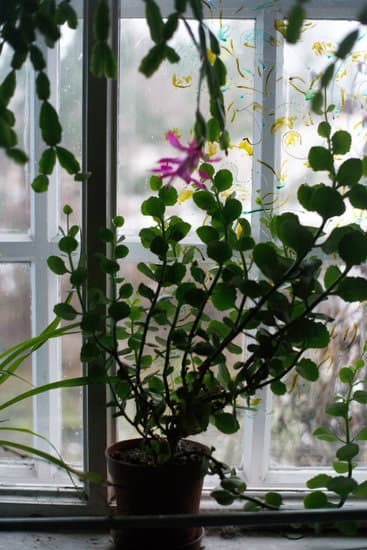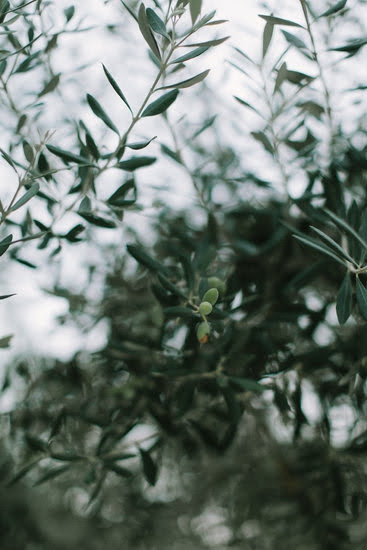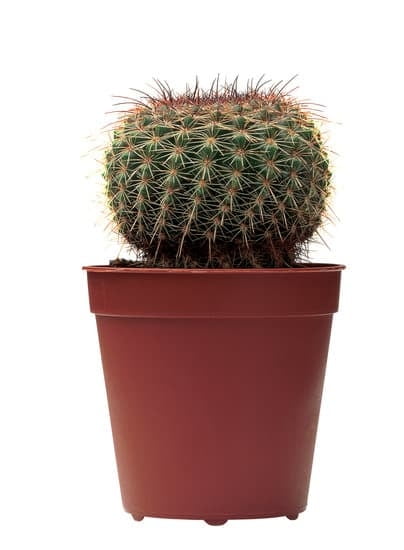Flower bed gardening is a delightful way to add color, fragrance, and beauty to your outdoor space. Whether you’re a seasoned gardener or just starting out, there are endless possibilities for creating stunning flower beds that will enhance your landscape. In this article, we will explore various flower bed gardening ideas to inspire and guide you in transforming your garden into a blooming paradise.
One of the key aspects of flower bed gardening is the creative process of designing and planning your garden beds. From colorful blooms to captivating foliage, the options are vast when it comes to selecting plants for your flower beds.
Whether you prefer a traditional look or something more contemporary, there are endless opportunities to showcase your unique style through your garden design. By incorporating different colors, textures, and heights, you can create visually appealing flower beds that will be a focal point in your yard.
In addition to the aesthetic appeal of flower bed gardening, there are also numerous benefits that come with cultivating these beautiful garden spaces. Flower beds not only attract pollinators like butterflies and bees but also help improve air quality and create a peaceful ambiance in your outdoor environment.
Furthermore, tending to your flower beds can be a therapeutic activity that allows you to connect with nature and unwind from the stresses of daily life. Stay tuned as we delve into the benefits, types, tools/supplies, seasonal planning tips, plant selection strategies, creative designs/layouts, maintenance practices, and inspiring ideas for small spaces in the realm of flower bed gardening.
Benefits of Flower Bed Gardening
Flower bed gardening is a rewarding and enjoyable hobby that offers numerous benefits for both novice and experienced gardeners alike. One of the key advantages of flower bed gardening is the opportunity to enhance the beauty of your outdoor space with vibrant colors and lush greenery. Whether you have a small balcony or a spacious backyard, creating flower beds can instantly elevate the aesthetic appeal of your landscape.
In addition to aesthetic benefits, flower bed gardening also provides numerous environmental advantages. Flower beds help attract beneficial pollinators such as bees, butterflies, and hummingbirds, which play a vital role in plant reproduction and biodiversity. By incorporating native plants in your flower beds, you can create a sustainable ecosystem that supports local wildlife and contributes to preserving the natural balance in your area.
To get started with your flower bed gardening journey, consider these essential tools and supplies to ensure successful growth and maintenance of your plants:
- Gardening gloves to protect your hands while working with soil and plants
- A sturdy shovel for digging holes and preparing the soil
- Pruning shears for trimming dead branches or shaping plants
- Fertilizer to provide essential nutrients for healthy growth
- Mulch to retain moisture and suppress weed growth
By investing in high-quality tools and supplies, you can set yourself up for success in creating beautiful flower beds that will thrive throughout the seasons. Experiment with different types of flower bed designs, layouts, and plant combinations to discover your own unique style and create a stunning outdoor oasis that reflects your personality and creativity.
Types of Flower Beds (Raised, in-Ground, Container)
Flower bed gardening offers a myriad of options when it comes to the types of flower beds you can create in your garden. Whether you have limited space, want to add dimension to your landscape, or simply prefer a specific style, there is a type of flower bed that suits your needs. Here are the three main types of flower beds commonly used by gardeners:
- Raised Flower Beds: Raised flower beds are elevated from the ground, either built with wood, stone, or other materials. They offer better drainage and soil aeration compared to in-ground flower beds. These types of beds are ideal for those who have poor soil quality or experience frequent weed problems.
- In-Ground Flower Beds: In-ground flower beds are traditional beds that are dug directly into the ground. They provide more freedom in terms of design and layout but may require more maintenance in terms of weeding and watering. In-ground flower beds work well for large spaces and can be easily integrated into existing landscaping.
- Container Flower Beds: Container flower beds are perfect for small spaces, balconies, patios, or areas with poor soil quality. Planting flowers in pots, planters, or hanging baskets allow for flexibility in changing designs based on season or preferences. Container flower beds also make it easier to move plants around for optimal sunlight exposure.
Each type of flower bed has its advantages and considerations, so choose the one that best fits your gardening style and space availability. Whether you opt for raised beds for improved drainage, in-ground beds for traditional charm, or container beds for versatility and convenience, incorporating these different types can add variety and visual interest to your garden while showcasing your favorite blooms and enhancing curb appeal.
Remember to consider the maintenance requirements, aesthetic appeal, and overall functionality when selecting the type of flower bed that aligns with your gardening goals and preferences. Experimenting with different types can lead to discovering new ways to showcase your favorite flowers and create stunning focal points in your outdoor space. With these creative options at hand, you can enjoy designing unique floral displays that reflect your personal style and bring beauty to your surroundings through innovative flower bed gardening ideas.
Essential Tools and Supplies for Flower Bed Gardening
Flower bed gardening is a delightful and rewarding hobby that requires the right tools and supplies to ensure success. One essential tool for flower bed gardening is a quality set of garden hand tools, including a trowel, hand rake, and pruners. These tools are necessary for planting, weeding, and maintaining your flower beds. Additionally, a sturdy garden hose or watering can is crucial for keeping your flowers well-hydrated, especially during hot summer months.
In addition to basic hand tools, having a reliable pair of gardening gloves can protect your hands from thorns, sharp stems, and other potential hazards while working in the garden. A wheelbarrow or garden cart can also be beneficial for transporting soil, plants, mulch, and other heavy materials to and from your flower beds. Furthermore, a quality pair of pruning shears will come in handy for trimming back overgrown branches or deadheading flowers to encourage new blooms.
Supplies such as high-quality potting mix or soil amendments, fertilizer suitable for flowering plants, mulch to retain moisture and suppress weeds, as well as pest control products like insecticidal soap or neem oil are essential for maintaining healthy flower beds. Investing in these tools and supplies will not only make your flower bed gardening experience more enjoyable but also help you achieve beautiful and thriving floral displays throughout the year.
| Essential Tools | Supplies |
|---|---|
| Garden hand tools (trowel, hand rake) | Potting mix or soil amendments |
| Watering can or garden hose | Fertilizer for flowering plants |
| Gardening gloves | Mulch for moisture retention |
Seasonal Flower Bed Planning (Spring, Summer, Fall, Winter)
When it comes to planning your flower bed garden throughout the year, it’s essential to consider the changing seasons and how they affect your plants. In spring, you can look forward to the vibrant colors of tulips, daffodils, and hyacinths blooming. This season is perfect for planting annuals like petunias or marigolds that thrive in the warmer weather.
Summer brings a variety of flowering plants like roses, zinnias, and sunflowers. Be sure to keep your flower beds well-watered during this time to help them withstand the heat.
Transitioning into fall, you can introduce plants that thrive in cooler temperatures such as mums, asters, and ornamental grasses. Consider adding some ornamental kale or pansies for a pop of color as the days get shorter.
Winter flower bed gardening doesn’t have to be dull – consider varieties like winter jasmine or hellebores that bloom even in the colder months. With proper planning and selection of seasonal flowers, you can enjoy a colorful and thriving flower bed garden all year round.
One way to ensure success with your seasonal flower bed planning is by creating a calendar or schedule for planting, fertilizing, and maintaining your garden throughout the year. By staying organized and proactive with your gardening tasks, you can make the most out of each season and keep your flower beds looking their best.
Whether you’re tending to spring blooms or winter blossoms, having a plan in place will not only make gardening more enjoyable but also yield beautiful results.
| Key Points | Seasonal Flower Bed Planning |
|---|---|
| Spring | Plant tulips, daffodils, petunias |
| Summer | Water regularly; Plant roses, zinnias |
| Fall | Add mums, asters; Incorporate ornamental kale |
| Winter | Bloom winter jasmine; Include hellebores |
Color and Plant Selection for Flower Beds
When it comes to flower bed gardening, one of the most exciting aspects is choosing the colors and plants to include in your garden. The key to creating a visually appealing flower bed is to carefully select a variety of flowers that will complement each other while also considering their size, shape, and blooming season. Before you start planting, take some time to plan out your color scheme and plant selection to ensure a cohesive and harmonious look.
When selecting plants for your flower bed, consider both the color of the blooms and the foliage. Opt for a mix of colors that will create contrast and interest in your garden. For example, pairing complimentary colors like purple and yellow can create a vibrant and eye-catching display. Additionally, mixing plants with different leaf textures can add depth and visual appeal to your flower bed.
Incorporating a variety of flowering plants with different blooming times can ensure that your flower bed remains colorful throughout the growing season. Consider including early bloomers like crocuses or daffodils for an early pop of color in the spring, followed by summer-blooming favorites like roses or lilies.
You can also add fall-blooming plants like asters or chrysanthemums to extend the beauty of your flower bed into autumn. By carefully selecting a diverse range of plants with varying bloom times, you can enjoy a continuously blooming garden throughout the year.
Creative Flower Bed Designs and Layouts
When it comes to flower bed gardening, the design and layout of your garden can make a huge impact on the overall aesthetic and functionality of your outdoor space. Creative flower bed designs and layouts can transform a dull yard into a vibrant and beautiful oasis. Whether you have a small backyard or a large garden area, there are endless possibilities for creating unique and visually pleasing flower beds.
Curved Flower Beds
One popular design option for flower beds is to create curved edges rather than straight lines. Curved flower beds can add a sense of flow and movement to your garden, making it feel more organic and natural. You can use bricks, stones, or even plants to create gentle curves that frame your flowers beautifully.
Layered Flower Beds
Another creative design idea is to create layered flower beds with varying heights. By incorporating plants of different heights and textures, you can add depth and visual interest to your garden. Tall plants at the back provide a backdrop for smaller flowers in front, creating a dynamic and eye-catching display.
Theme-Based Flower Beds
For those looking to add a unique touch to their garden, consider creating theme-based flower beds. Whether you want to plant all white flowers for a serene look or incorporate bold colors for a vibrant display, choosing a theme can help guide your plant selection and create cohesion in your garden. From cottage gardens to tropical paradises, the possibilities are endless when it comes to themed flower bed gardening ideas.
Maintenance Tips for Healthy and Vibrant Flower Beds
Maintaining healthy and vibrant flower beds is essential to ensure your garden continues to thrive throughout the seasons. By following some key tips and best practices, you can enjoy a beautiful display of flowers year-round. From watering and fertilizing to pest control and weeding, here are some maintenance tips for keeping your flower beds in top condition.
Watering and Fertilizing
Proper watering is crucial for the health of your flowers. Different types of flowers have specific water requirements, so it’s important to research the needs of each plant in your flower bed. In general, most flowers prefer soil that is moist but well-drained. Using a soaker hose or drip irrigation system can help deliver water directly to the root zone, reducing water waste through evaporation.
Fertilizing your flower bed is also important for providing essential nutrients to promote growth and blooming. Consider using a balanced fertilizer or one formulated specifically for flowering plants. Be mindful not to over-fertilize, as this can lead to excessive foliage growth at the expense of blooms. Follow the instructions on the fertilizer packaging for best results.
Pest Control and Weeding
Regularly inspect your flower bed for any signs of pests or disease. Common garden pests like aphids, slugs, and snails can damage your flowers if left unchecked. Consider using natural remedies or organic pesticides to manage pest infestations while minimizing harm to beneficial insects like bees and butterflies.
Weeding is another important aspect of maintaining a healthy flower bed. Weeds compete with your flowers for water, sunlight, and nutrients, so it’s crucial to stay on top of weed control. Regularly hand-pull weeds or use mulch to suppress weed growth in your flower bed. Remember to remove any weeds before they have a chance to go to seed and spread throughout your garden.
Inspirational Flower Bed Ideas for Small Spaces
When it comes to flower bed gardening, even those with limited space can create beautiful and inspiring displays. Small spaces offer unique opportunities for creative and innovative designs that can transform any area into a vibrant oasis of color and life. By carefully selecting plants, utilizing vertical space, and incorporating clever design techniques, small space flower beds can be just as stunning as their larger counterparts.
One key aspect of creating inspirational flower bed ideas for small spaces is to maximize every inch of available space. Vertical gardening, using hanging baskets, trellises, or wall-mounted planters can add depth and visual interest to a small area.
Mixing different types of plants with varying heights and textures can create a layered look that makes the most of the limited space. Additionally, using containers or raised beds can help define separate areas within a small garden while adding versatility to the overall design.
In conclusion, whether you have a tiny balcony, a compact patio, or a postage-stamp-sized yard, there are endless possibilities for creating stunning flower beds in small spaces. With careful planning, thoughtful plant selection, and creative design techniques, anyone can enjoy the beauty and tranquility that flower bed gardening brings.
By implementing some of these inspirational flower bed ideas for small spaces, you can turn even the tiniest plot of land into a lush and vibrant floral haven that will delight both you and your visitors.
Frequently Asked Questions
How Do You Arrange Plants in a Flower Bed?
Arranging plants in a flower bed involves considering factors like the plant’s height, color, and blooming period. Typically, taller plants are placed at the back while shorter ones are at the front for visibility.
What Is the Best Way to Layout a Flower Bed?
The best way to layout a flower bed is to start by choosing a focal point plant, then adding complementary plants around it. Consider factors like plant sizes, colors, textures, and blooming seasons to create an aesthetically pleasing arrangement.
What Is the Best Thing to Put in Flower Beds?
The best things to put in flower beds are a mix of perennials, annuals, shrubs, and bulbs for continuous blooming throughout the seasons. Adding mulch can help retain moisture and suppress weeds while providing a polished look to the flower bed.

Welcome to my gardening blog! I am passionate about plants and enjoy sharing my knowledge and experiences with others. In this blog, I will write about everything related to gardening, from tips on how to get started to updates on my own garden projects.





